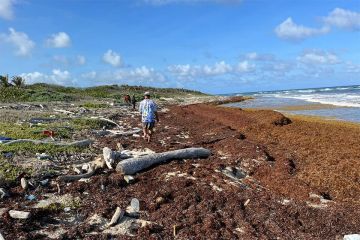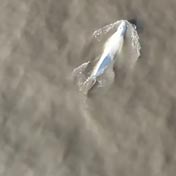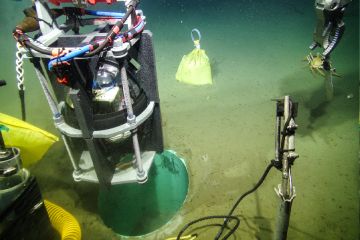Researching climate change in Canada's arctic
- Tara Sharpe
It’s not good news for Santa that the North Pole is melting, and just before the holiday season a trio of researchers affiliated with the University of Victoria returned from a first-hand view of how the ice is responding to climate change.UVic master’s student Jen Tyler (biology), UVic master’s candidate Cherisse Du Preez (biology) and Ian Murdock (Canadian Scientific Submersible Facility) were involved in a 26-day Arctic research cruise and lent their expertise with a specialized piece of underwater equipment.
UVic professor Dr. Kim Juniper, BC Leadership Chair in Marine Ecosystems and Global Change, and UVic professor Dr. Verena Tunnicliffe, Canada Research Chair in Deep Ocean Research and VENUS Project director, have helped develop CHONe, the NSERC Canadian Healthy Oceans Network which, together with the ArcticNet network, provided the trip’s funding. On Sept. 4, Tyler, Du Preez and Murdock joined other science personnel onboard the research icebreaker CCGS Amundsen, a mobile platform used by ArcticNet to study the changing Arctic Ocean.
“CHONe is undertaking a major study of the health and marine ecosystems in all three of Canada’s oceans, and ArcticNet is providing essential access to coastal seas in the Arctic,” says Juniper. “At UVic, we are thrilled to contribute to this vital effort to understand how the disappearance of summertime ice cover will change marine ecosystems in the North.
”It is unique for a Coast Guard research vessel to be fitted with its own remotely operated vehicle (ROV), and the three team members had an opportunity to showcase the dexterity of this expensive robot to others aboard the CCGS Amundsen.
Tyler and Du Preez oversaw its deepsea dives, and Murdock was its chief pilot. The ROV was launched from the vessel’s internal moon pool, which acts like a door in the bottom of the ship and allows researchers to send equipment safely into the depths without worrying about stormy weather or the possibility of icebergs sideswiping devices during an unprotected launch from the side of the ship. The ROV is humanlike in appearance—with arms and even a pair of eyes—and it motored down to the seafloor with a bucket and spade slung in a sack over one arm. The researchers could observe octopuses, squid and cold-water deep-sea corals, and the sediment samples extracted in the ROV’s bucket will reveal what has drifted down from the sea’s surface to the deeply hidden ecosystem below.
“It’s not easy to get down there,” says Du Preez, “but when the ROV turns on its lights, the seafloor is teeming with fish of all colours and other creatures that may just look like ‘creepy crawlies’ to everyone else but are magical to scientists: they can tell us so much about the state of this ocean.”
NBC’s “Today Show” aired two stories on the ArcticNet trip which include footage of the ROV and scenes aboard the icebreaker.
In this story
Keywords: arctic, climate change, research, oceans
People: Kim Juniper, Verena Tunnicliffe




